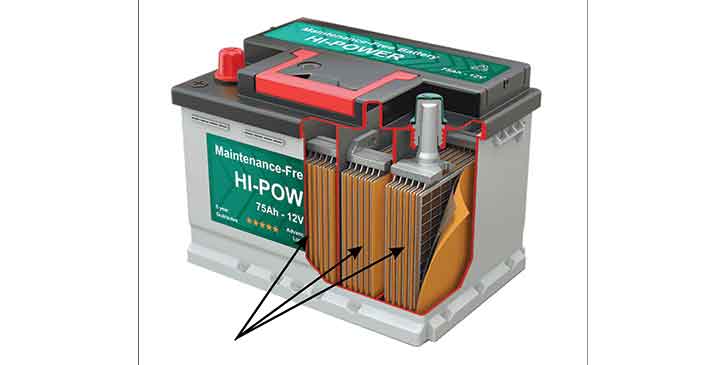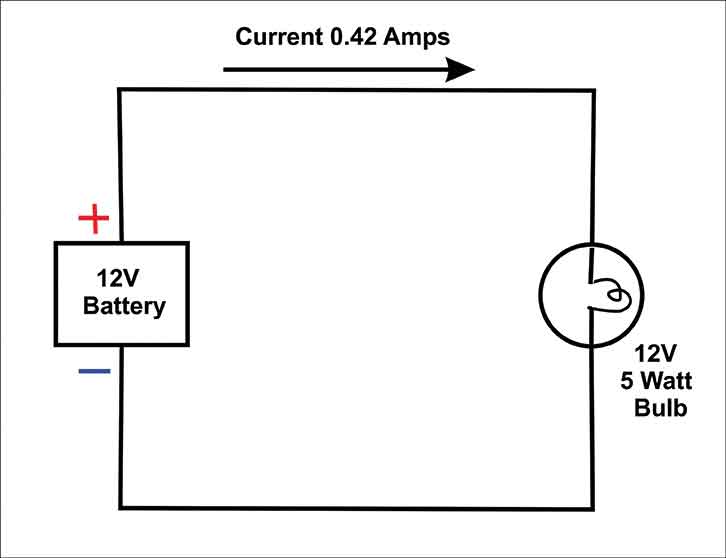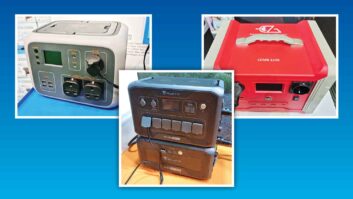We are all familiar with the word ‘Watt’, which we come across on our motorhome kettles, light bulbs, vacuum cleaners, hairdryers and more. But what is a Watt?
Well, the dictionary definition goes something like this:
Watt (W): The SI unit of power, equivalent to one joule per second, corresponding to the rate of consumption of energy in an electric circuit where the potential difference is one volt (V) and the current is one amp (A).
Electrical terms
That’s quite a lot to get to grips with when you want to know what a Watt is, so let’s simplify things. First, you will no doubt have noticed that two other familiar electrical terms have crept into the picture, namely ‘Volt’ and ‘Amp’. This is because the three are interrelated. Consider the following formula for electrical power and you will see what I mean:
Volts x Amps = Watts
This means if a voltage applied to a circuit is, say, 12V and it causes a current of 1A to flow, the power being developed is 12W (12 x 1 = 12).
Let’s take a more practical example, which many will be familiar with – that is, a vehicle’s tail-light bulb.
These are usually 12V, and let’s assume a power rating of 5W (tungsten, not LED). Knowing two of the parameters (voltage and power), the formula can also simply be transposed, to provide us with a figure for the current:
- Watts ÷ Volts = Amps
- 5 ÷ 12 = 0.42A or 420mA
Why would a motorhome owner need to know what a Watt is?
So now you might be wondering why any motorhome owner would want to know such things. Well, it depends on how DIY-orientated you are.
I for one prefer to carry out as much of my vehicle maintenance and repair work as I can myself – mainly because it’s much cheaper and it’s all done to my own standards.
But if any of that DIY work involves replacing wiring, it is essential to know what its current loading (and voltage, to some extent) will be, because this will dictate the thickness and type of wire that needs to be used.

Light bulbs and the like only provide their working voltage and their power rating, so it is very useful to be able to determine the current they will draw.
What about 12V DC?
As a brief but useful digression, have you ever paused to ponder just why our base vehicles’ electrical systems are usually 12V DC, anyway?
Direct current (DC)
In DC, the polarity remains the same without changing, as opposed to Alternating Current (AC), where it changes at a predetermined frequency (for example, the 230V mains that we have at home changes polarity 50 times per second).
To understand this, we have to go back to the time when early vehicles had no electrical systems. The only ‘electrics’ on board was a magneto, which provided the power for the spark plugs – but only when the engine was turning.
But as batteries became more available, vehicles were equipped with rudimentary electrical systems, which powered the ignition and the lighting.
These systems were 6V DC, and a 6V DC dynamo, turned by the engine, kept the 6V lead-acid battery charged.

Lead-acid battery
The cells in these batteries contain filled lead ‘plates’, immersed in a dilute solution of sulphuric acid electrolyte. These cells have a generic voltage of 2V per cell and are arranged in series connection to achieve the voltage. So a 12V vehicle battery has six cells wired in series.
Unfortunately, 6V was found to be too low, because (going back to the V x A = W formula) high currents were needed to obtain meaningful power transfers.

To offset this to some degree, the system voltage was raised to 12V DC, which halved the currents for the same power delivery, meaning that wires and so on could be thinner.
Larger commercial vehicles, where power requirements can be high, run on 24V DC systems, thus halving the currents needed yet again for the same transmission of power. Smaller vehicles do not have 24V systems because the battery sizes become unwieldy.
As you’ve probably gathered from the foregoing discussions, the current is the ‘Bad Guy’ here, because it needs thicker conductors to pass more of it, and it also generates ‘lossy’ (dissipating) heat along the way – quite undesirable.
While we’re on the subject, have you ever wondered why in this country, we have high-voltage power lines suspended from pylons in fields? It’s for the same reasons covered above – the more volts, the fewer amps for the same power transfer.
Pylon power lines can run at up to 400,000V, keeping currents, and losses, to a minimum.
The only problem is that the higher the voltage, the greater the risk of arcing (that is, long sparks from the conductors to earth), so there is a clear limit to how high the voltages can go. Lightning bolts are millions of volts – we all know what they look like!
Now let’s get back to the question of motorhome electrics, with a brief glimpse into the future, but you can also check out our guide to winter battery care to find out what to do for yours during the colder months.
Electric vehicles
As we all do our best to go greener, we are entering into the realm of electric vehicles (EVs), which use banks of lithium-ion cells for storing energy. Many of these vehicles have motors running in the region of 600V in an effort to keep currents down.
Needless to say, separate 12V systems are still retained for all of the peripheral equipment, such as the lights, horns, in-car entertainment and so on.
This is mainly due to the fact that most EVs are obliged to use the same kit as petrol/diesel models. However, as time goes by and the technologies develop, this could well change.
But whatever might happen in the future of the motorhome industry, one thing is certain – we will still need to understand a reasonable amount about how all of those volts, amps and Watts interact with one another.
Interested in more electrical talk? Then why not find out how safety circuit breakers work? Thinking of getting your ‘van ready for winter? Then take a look at our guide to winterising a motorhome, where we talk you through the process.
Future Publishing Limited, the publisher of Practical Motorhome, provides the information in this article in good faith and makes no representation as to its completeness or accuracy. Individuals carrying out the instructions do so at their own risk and must exercise their independent judgement in determining the appropriateness of the advice to their circumstances. Individuals should take appropriate safety precautions and be aware of the risk of electrocution when dealing with electrical products. To the fullest extent permitted by law, neither Future nor its employees or agents shall have any liability in connection with the use of this information. Double check any warranty is not affected before proceeding.
If you’ve enjoyed reading this review, why not get the latest news, reviews and features delivered direct to your door or inbox every month. Take advantage of our brilliant Practical Motorhome magazine SUBSCRIBERS’ OFFER and SIGN UP TO OUR NEWSLETTER for regular weekly updates on all things motorhome related.









